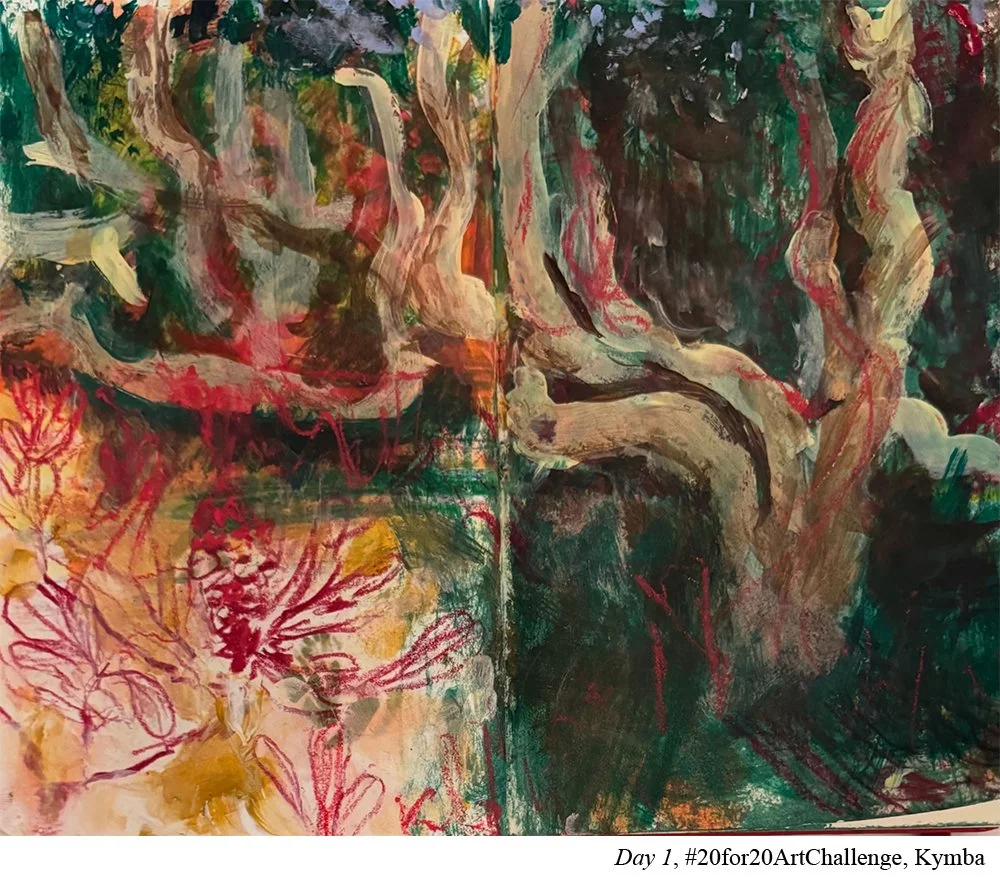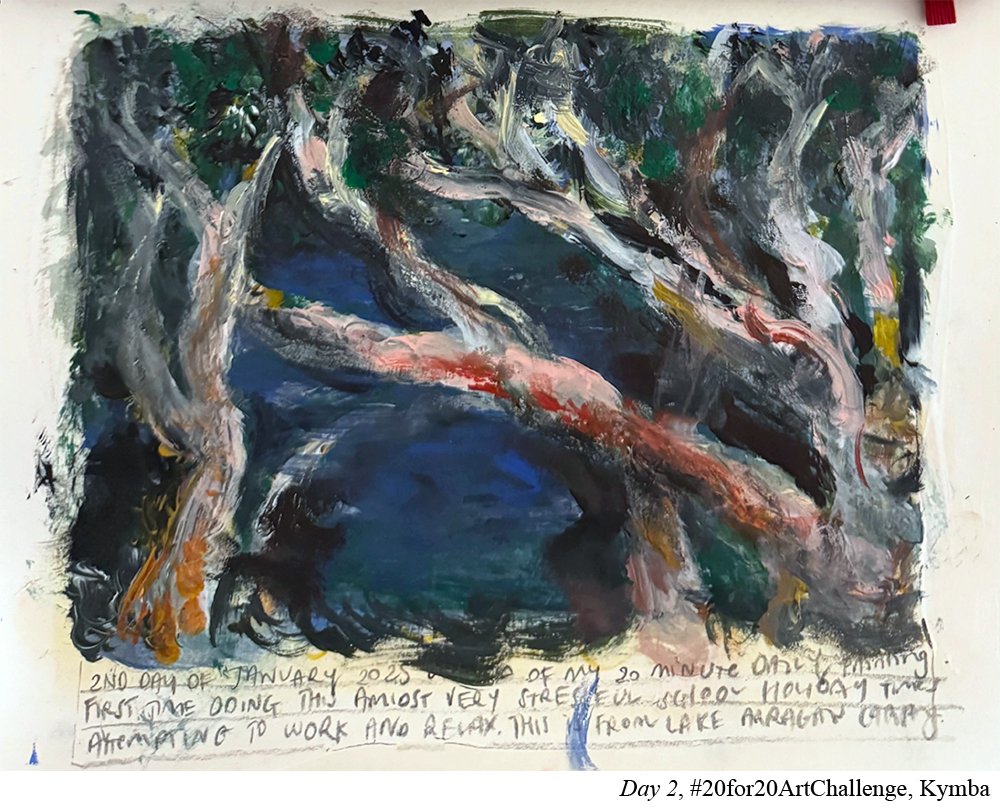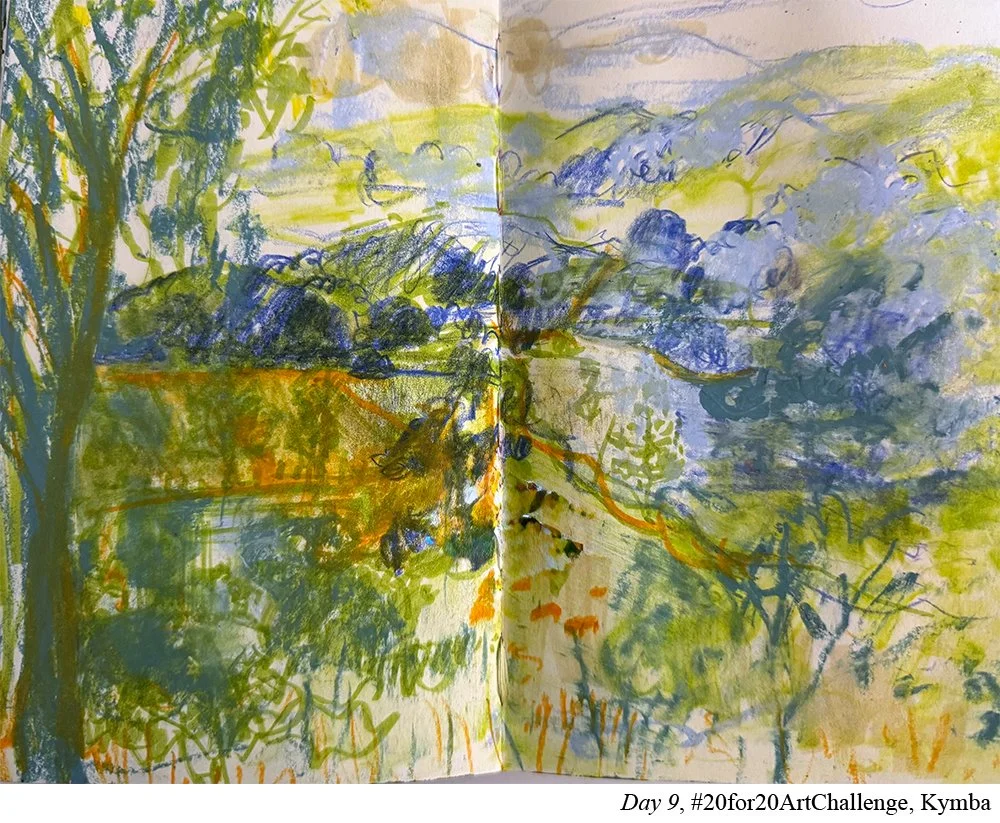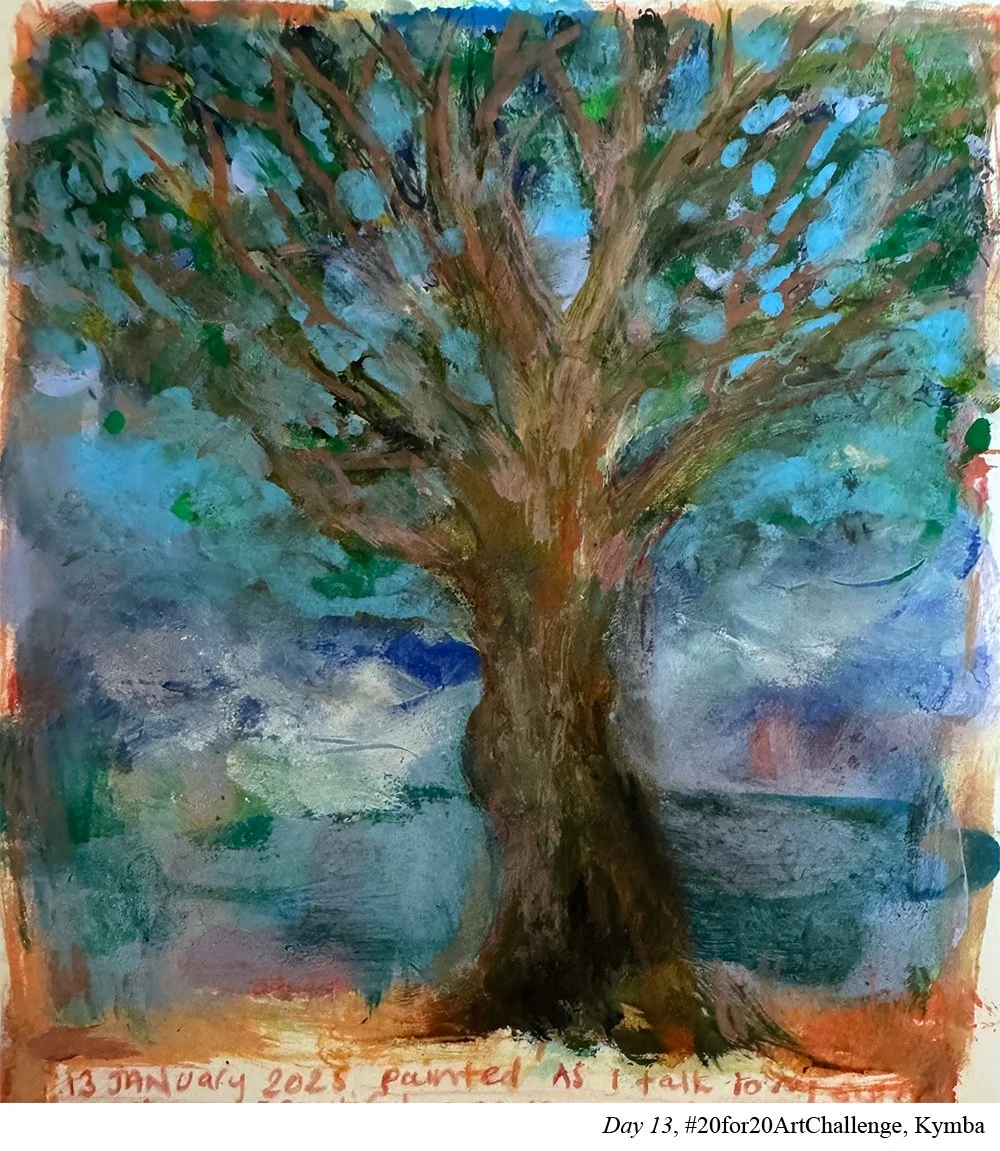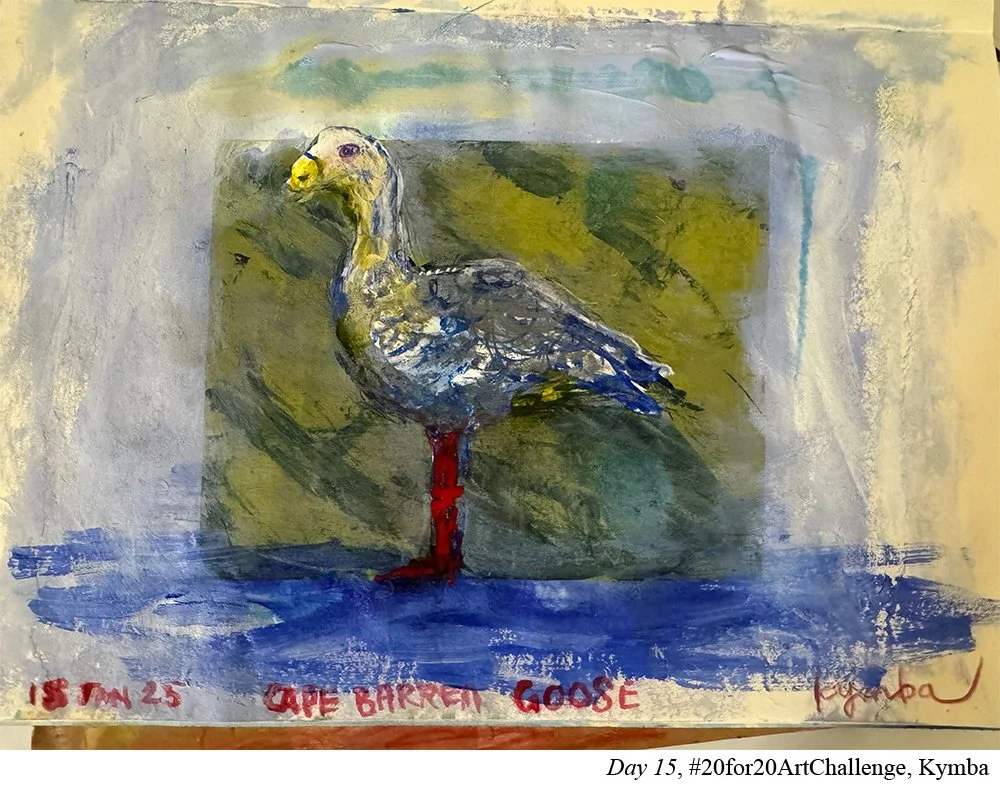Daily Practice: Kymba
Kymba joined the #20for20 Challenge with a newly formed daily art practice—but without a set time limit. Intrigued by the idea of short bursts of focused time, she used the challenge as an experiment: How would different time constraints affect her process? What she discovered was surprising—when she stuck to the 20-minute limit, it felt challenging, but it also helped her stay more connected to her own artistic voice. Learn more about Kymba at her website here.
You have a daily painting practice. What did your daily practice look like before the 20for20? What about the #20for20 made you want to try it out?
Each night, after putting my two kids (7 and 8 years old) to bed, I carved out time for myself. As a solo (soul) parent of two neurodivergent kids, plus running a business … I needed something just for me. One night, during a particularly overwhelming time, I turned to art instead of TV/overeating/scrolling etc… – it felt like a revelation. From that moment, my evening art practice became sacred.
So each night, I’d put on the same YouTube video in the background and paint and doing art without any pressure on myself. The practice rewired my days – suddenly, I was noticing color, light, and tone everywhere. My nights became about painting, and my days were filled with a craving to paint.
I’d only been doing this new “accidental-art-practice” for about four months when I heard artists on the Learn to Paint Podcast talk about how 20for20 had transformed their practice. It seemed like a pivotal moment for so many, and I was intrigued. Even though I was already stretched thin, I figured – why not? I was already painting every night, so it wouldn’t feel like an extra demand.
What were your goals heading into the Challenge?
Connection. I wanted to find like-minded artists and build a creative community. Beyond that, I resisted setting too many goals. With so many demands already on me, my priority was simply to show up without pressure or expectation.
How long did you work each day?
I initially planned for a minimum 20 mins, but after reading your recommendations, I switched to a maximum of 20 mins. Sticking to that limit was harder than I expected – 20 minutes flies by!
I ended up experimenting, using this challenge as a reconnaissance mission for future ones. Some days I stuck to the limit, other days I went over. Ultimately, I gave myself permission to explore different approaches rather than forcing a strict routine.
How did you decide where in your day to put your practice each day?
I tried painting 30 minutes before bed to curb my tendency to go over time… but it didn’t work—I just stayed up later! Some of my uploads were probably near midnight.
Stopping at 20 minutes often would have resulted in stronger work. I noticed that beyond that point, I’d start overworking my paintings. I also experimented with plein air painting and stretching a single piece over two days. No matter what, I spent most of my day craving that painting time.
20 minutes is not that long. What were the challenges and what were the benefits? How did you have to adjust your expectations?
I had to drastically adjust my expectations. 20 minutes is nothing – but that’s what made it so powerful.
This challenge highlighted my natural tendency to work quickly and boldly. I realized that I was layering too much, often painting over moments that were already beautiful. The 20-minute limit forced me to trust my initial marks, which is a skill I want to hone further.
When it’s just 20 minutes, there's a risk in expanding out the time until you’ve “finished a painting” or got something you like enough to share with the world. What is the benefit to you to really hold to the 20 minutes?
Realistic expectations for what can be achieved in that time
The discipline to stop – even when I wanted to keep going
The importance of preparation
Letting go of perfectionism and the need to “finish”
Working smaller and limiting my palette
Focusing on one simple goal – whether composition, values, or process
Early in the Challenge, you mentioned that you might need to set some boundaries. What challenges were you feeling and how did you go about building in those boundaries? How did that improve your ability to show up each day?
I have a hyper-focused, disciplined side to me that I use in my branding design business – I love strong parameters. But my personal art practice has turned out to be completely fluid, unstructured, and quite frankly – all-over-the-place. It’s been a deep, healing, poetic space for me, throwing myself into my art at the end of the day. But this approach had a cost… ignoring housework, losing sleep (as I stayed up late doing art)… it was starting to affect every part of my life and I was creating vague, directionless creative processes
This challenge helped me see how structure could support my creativity rather than stifle it. I’m realizing that having clarity and parameters – without rigidity – can actually enhance my creative flow art process.
You already have a consistent practice, but did you find any benefit to showing up for shorter sessions? Did that make you think differently about how you might approach your practice going forward? If yes, how?
Yes – having a shorter time-frame highlighted something crucial in my style. I naturally work fast and thrive in a bold, spontaneous approach. Previously, I’d habitually add layer upon layer, sometimes losing the magic in the process. Now, I see the value in stopping earlier.
How did you decide what to work on each day both subject wise and material wise?
I tried to be focused! My initial theme was birds, insects, and botany – which was already too broad. I didn’t stick to it. True to my nature, I wandered between subjects and different styles. This highlighted a need for a balance between creative freedom and having clear parameters.
What was the most helpful mindset for you to try and keep during the 20for20?
Stick to the brief. When I did set clear intentions, I worked better. I’ve learned that while I crave creative flow, some level of direction makes my work stronger. Moving forward, I want to embrace structured experimentation—enough discipline to guide me, but enough freedom to stay playful.
If you were to do your project again, are there any changes that you’d make knowing what you know now?
Yes, I would set a more specific subject, limit my color palette, and establish a dedicated time of day—ideally first thing in the morning. I’d also use a timer and commit to putting my brush down after 20 minutes.
Any advice to someone thinking about taking part in the Challenge?
It was completely different from what I imagined – it surprised me in so many ways that only make sense once you’re in it, doing it.
On the surface, the idea is simple: paint for 20 minutes a day. What could be so hard about that?
But in reality, it feels like some kind of sophisticated board game. There are hurdles to overcome, and making it through each one feels like levelling up. Once you get into the rhythm and make it work, you realize you’re building a practice for life. I’d love to keep a 20-minute daily practice and then any extra painting, drawing, or sketching after that is a bonus.
Learn more about the next #20for20 here.

